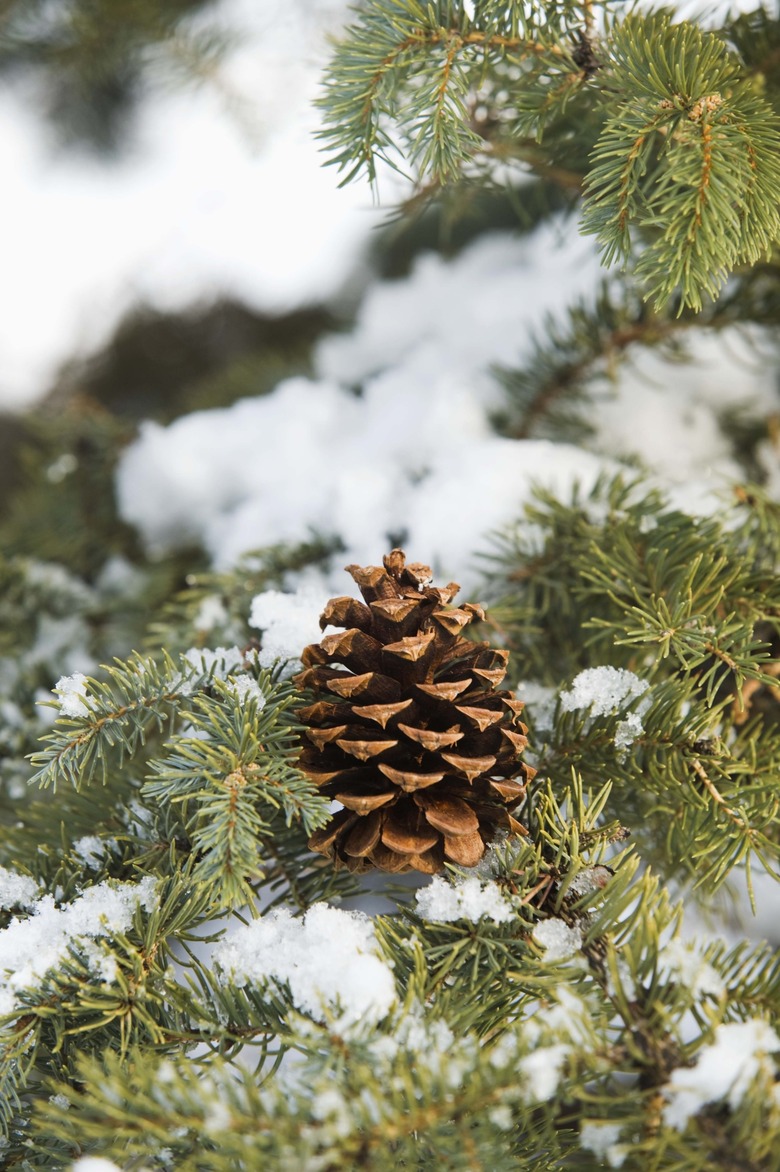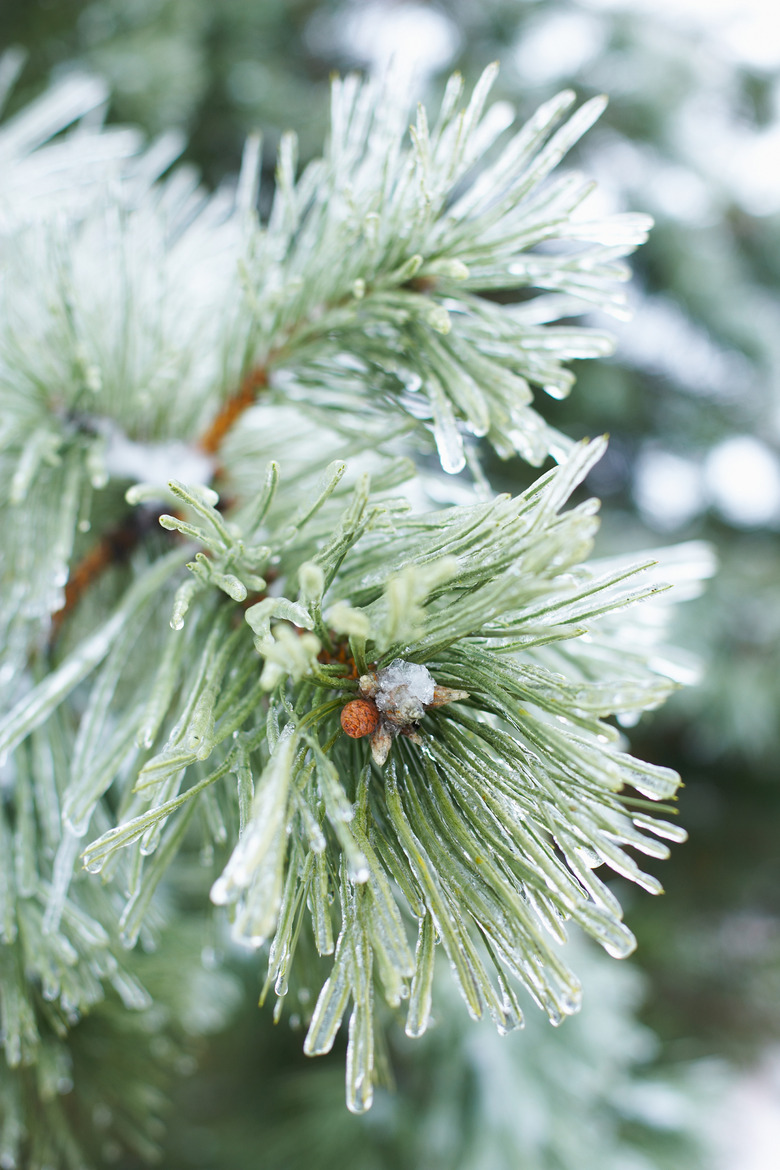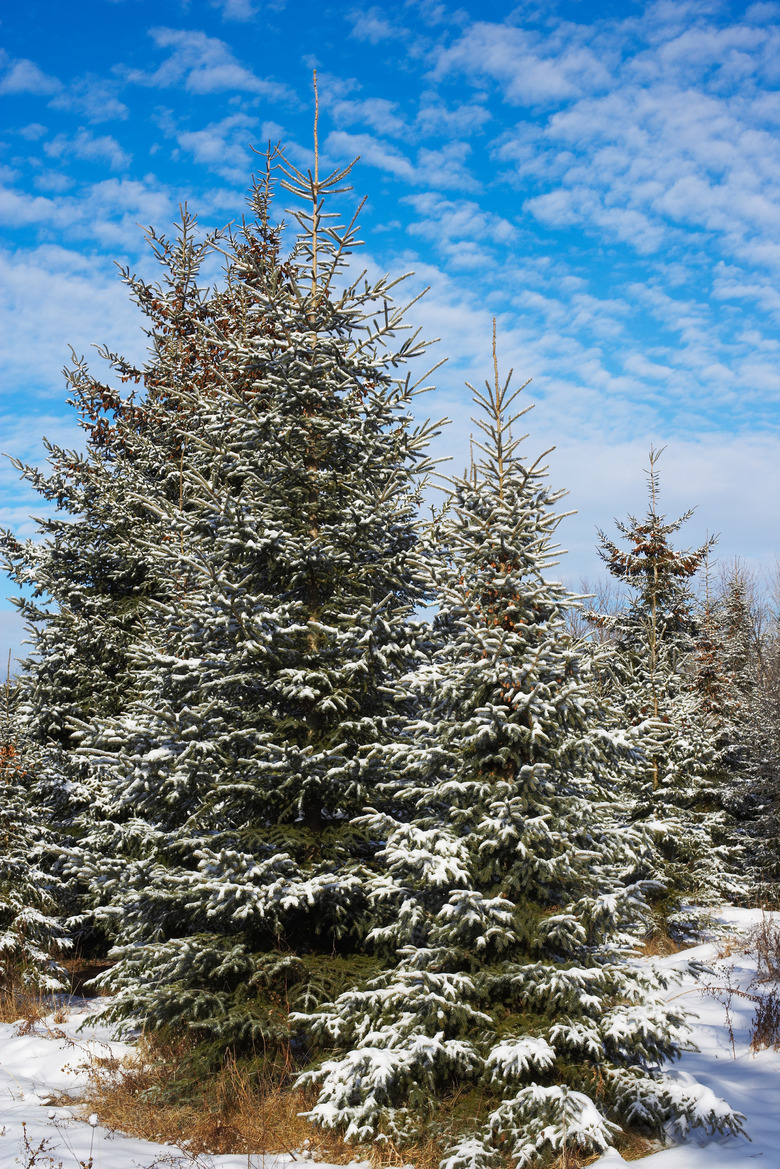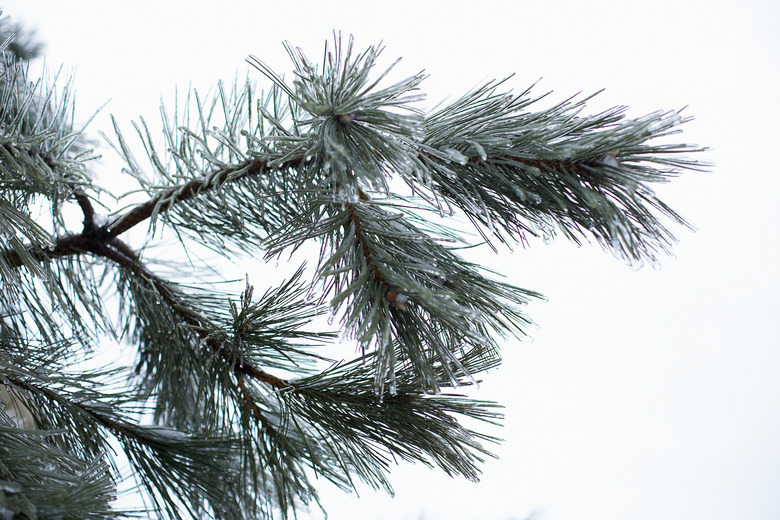Characteristics Of A Coniferous Tree
The sculptural form and bright green color of the winter foliage of coniferous trees are a striking sight in the winter landscape. These iconic characteristics of coniferous trees are adaptations to withstand the dry cold of northern climates and the accompanying challenges of water loss, water resupply and snow loads.
Step 1
Coniferous trees belong to a group of plants called gymnosperms, which means naked-seeded, as often the seeds are not enclosed in ovary-like structures as they are in flowers. Some coniferous plants like pine bear seeds in cones, while junipers bear seeds in berry-like structures. Often cone-bearing trees have needles for leaves, but not always. Dawn redwoods, for example, are coniferous but drop their leaves every year.
Needles
Step 1
The leaves of many species of coniferous trees are shaped as needles. Conifers retain a set of needles for two or three years instead of dropping them all every year. Needle retention extends the photosynthesis season but presents more water demands. The needles have fewer, tighter-closing stomata than broad leaves and a thick, waxy coating to reduce water loss. The structure of the needle helps reduce air movement and slow evaporation, while dense foliage moderates the micro-environment..
Step 2
- Coniferous trees belong to a group of plants called gymnosperms, which means naked-seeded, as often the seeds are not enclosed in ovary-like structures as they are in flowers.
- Some coniferous plants like pine bear seeds in cones, while junipers bear seeds in berry-like structures.
Winter
Step 1
Trees have an acclimation process comparable to animal hibernation that allows them to survive cold, dry conditions. Physiological changes as winter approaches raise the freezing temperature of the tree, which varies between species and even groups of trees inj the same species. Conifers also have adaptations that enable them to restore water columns several times over the winter during warm periods, whereas most deciduous trees can only restore the water transport system by growing new cells in the spring.
Shedding the Snow Load
Step 1
The growth habit of coniferous trees helps them resist the snow load damage of broken branches and stems. They have a single leader or main stem, instead of the many leaders of deciduous trees, in a pyramid shape that sheds snow more easily. The branches grow at obtuse angles to the stem so they can shed snow without bending too much. Longer wood fibers give them more flexibility, and dense foliage provides more wind resistance.
Step 2
- Trees have an acclimation process comparable to animal hibernation that allows them to survive cold, dry conditions.
- Conifers also have adaptations that enable them to restore water columns several times over the winter during warm periods, whereas most deciduous trees can only restore the water transport system by growing new cells in the spring.



